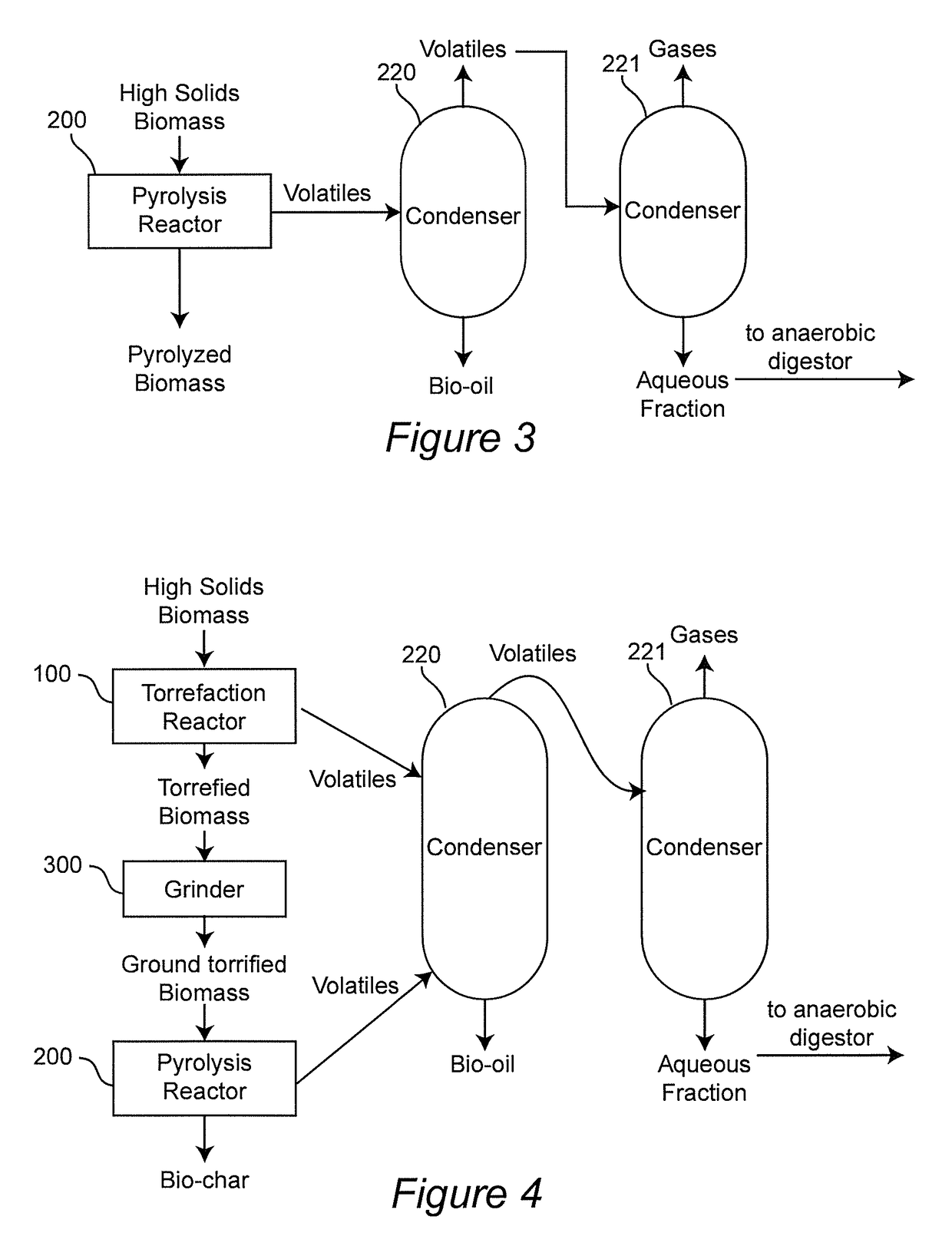Processing biomass using thermochemical processing and anaerobic digestion in combination
a biomass and anaerobic digestion technology, applied in biomass after-treatment, bio-sludge treatment, waste based fuel, etc., can solve the problems of limiting the deployment of pyrolysis and torrefaction units for bio-fuel and bio-power production, and the production of these small molecules is considered a serious environmental problem, so as to increase agricultural profits, promote economic development, and eliminate was
- Summary
- Abstract
- Description
- Claims
- Application Information
AI Technical Summary
Benefits of technology
Problems solved by technology
Method used
Image
Examples
example 1
Anaerobic Digestion Studies of C1-C4 Molecules Produced from the Pyrolysis of Lignocellulosic Materials
[0063]Lignocellulosic material was pyrolyzed as described herein using a two-step condenser and the resulting aqueous phase was characterized. The results are shown in Table. 1. As can be seen, compounds known to be compatible with feeding of anaerobes for co-digestion as described herein were produced.
[0064]
TABLE 1Aqueous Phase CharacterizationMass %Chemical CompoundsAcetic Acid5.7Acetol3.5Formic Acid0.7Lignin derived compounds (UV-Vis)8.3Water content58.4Total76.6TOCInorganic carbon0Total organic carbon6.4pH2.65
As shown in FIG. 7A-D, there are optimum concentrations for gas production during anaerobic digestion for each of the C1-C4 molecules produced during the thermochemical processing of lignocellulosic materials.
PUM
| Property | Measurement | Unit |
|---|---|---|
| mass % | aaaaa | aaaaa |
| temperatures | aaaaa | aaaaa |
| temperatures | aaaaa | aaaaa |
Abstract
Description
Claims
Application Information
 Login to View More
Login to View More - R&D
- Intellectual Property
- Life Sciences
- Materials
- Tech Scout
- Unparalleled Data Quality
- Higher Quality Content
- 60% Fewer Hallucinations
Browse by: Latest US Patents, China's latest patents, Technical Efficacy Thesaurus, Application Domain, Technology Topic, Popular Technical Reports.
© 2025 PatSnap. All rights reserved.Legal|Privacy policy|Modern Slavery Act Transparency Statement|Sitemap|About US| Contact US: help@patsnap.com



